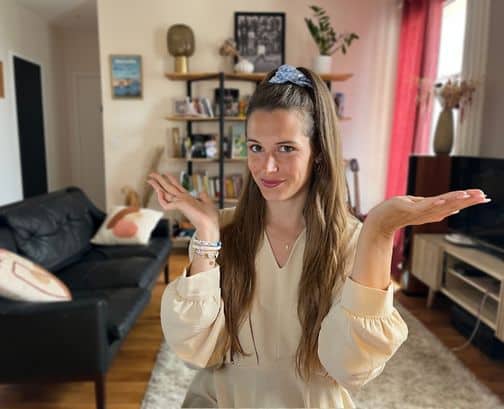Did you know that there are some fifteen different ways of saying au revoir in French? From classic locutions to expressions that, at first glance, may seem strange ("à un de ces quatre"... what?!), you'll find a complete list here, along with our pronunciation tips.
Au revoir (goodbye)
When in doubt, "au revoir" is a universal way of saying goodbye to someone. You can use it with anyone, in any situation, just like "goodbye" or "bye" in English.
Pronunciation
In the northern half of France, you're likely to hear it pronounced "au r'voir", as the trend is towards word contraction; in the south, on the other hand, the "e" is pronounced, and "au revoir" will have three syllables.
À tout de suite (See you in a bit)
"Right away" means immediately. Only use "see you soon" if you are going to see the person again within a few minutes. It is the equivalent of "see you shortly".
Pronunciation
There is also a North/South difference. Normans, Parisians and other Bretons will say "à tout d' suite", while Occitans and Provençals will pronounce each letter.
🚀 Transform your understanding of French IN 15 MINUTES A DAY
60 dialogues to boost your understanding of French 🇫🇷
À tout à l’heure (See you later)
If you intend to see the person again later today, then "see you later" is the phrase to use. The classic "see you later".
Pronunciation
Warning. Here one must make the connection between "all" and "to", therefore the "t" is pronounced: to all ͜ to time.
À plus tard (See you later)
To be used in the same way as "see you later", when a new meeting is scheduled for the same day.
Pronunciation
Here the "s" is silent.
À bientôt (See you soon) À très bientôt (See you very soon)
Soon means "in a little while". So when you say "see you soon", you are saying "see you in a little while". Generally speaking, no meeting is scheduled, so you express to the person your wish to see them again in the near future while remaining vague, just like "see you soon".
Pronunciation
The final "t" is silent.
“À ce soir” “à demain” “à la semaine prochaine”
Or how to say goodbye when the next meeting has already been planned: "see you tomorrow".
"Good day" "Good evening" "Good night
These phrases allow you to wish the other person a good day or evening ("have a good day/enjoy your evening").
Be careful not to confuse "good evening" with "bonsoir", a word to be used only as a greeting.
Also, note that "good night", has nothing to do with the English "have a good night". "Good night" is to be used only when you go to bed and is therefore the equivalent of "good night".
Adieu (Farewell)
It is best to avoid the use of "goodbye". Even if you've read it in a novel or heard it in a movie, it's an old-fashioned, somewhat dramatic word. There is no exact equivalent in English; "farewell" is much less dramatic!
Colloquial register
Use these informal expressions to say goodbye to your loved ones.
Salut (Hi)
A familiar goodbye par excellence, "hello" can also be used when approaching someone you know, to say hello; it really does go everywhere! There is no equivalent word in English - remember that "hello" is for friends and family only!
Pronunciation
Beware, the final "t" is silent, a pronunciation error often made by English speakers.
If you want to stand out from the crowd, try the following formulas, which will demonstrate a good knowledge of the subtleties of the language.
À la prochaine (See you next time)
"See you next time" is an ellipsis of the phrase "see you next time". Simply "see you next time".
À un de ces quatre (See you around)
Another ellipsis, "at one of these four" actually means "at one of these four mornings". Why four mornings and not three or five? Just because the number four is very present in French popular expressions (for example "couper les cheveux en quatre" = "to split hairs"; "ne pas y aller par quatre chemins"= "not mince your words"). So the number of mornings is not important here, literally we mean "see you at some point".
Pronunciation
Another small contraction in the North which gives "à un d'ces quatre".
À dans une heure (See you in an hour)
It should be noted that this expression is not grammatically correct, so it is reserved for oral conversation. It is widely used and can be adapted to any period of time: "see you in a week/a month/half an hour".
Pronunciation
We have to make the connection between "in" and "an": "to in ͜ an hour".
À tout’
Contraction of "à tout à l'heure".
Pronunciation
Pronounce the final "t" clearly.
À plus (See ya)
Contraction of "à plus tard".
Pronunciation
Be careful how you pronounce the "s"!
"Bye" "Ciao"
Both words are borrowed from English and Italian by many languages. In French, contrary to Italian usage, "ciao" (sometimes written "tchao") is only used to say goodbye and not as a greeting.
Hoping that these tips will be useful for your next French meetings, I say to you soon!








